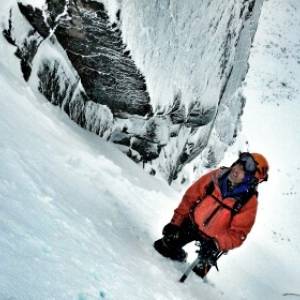Evolving
Regular readers will know that these little fluffy environmental terrorists are not my favourite creatures, but they do have their place, and where I live they are a strong part of our heritage.
Fans of Jake Thackaray might mistakenly believe that the old Celtic sheep counting songs belong to Yorkshire - but their deep roots started in Cumbric - and then morphed remarkably - a reflection of how these lonely vales were once so isolated and remote. Most start with Yan and Tyan, but by Tethera (Borrowdale) there are differences between Coniston (Tedderte) & Westmorland (Teddera) - and so it goes. Simply as it was the first I learnt I've always preferred the sing-song rhythm of Borrowdale;
Yan, Tyan, Tethera, Methera, Pimp, Sethera, Lethera, Hovera, Dovera, Dick, Yan-a-Dick, Tyan-a-Dick, Tethera-a-Dick, Methera-a-Dick, Bumfitt. And yes I went to 15 as it always make me giggle....
So now we know how many we need to know who they belong to. For many a moon the legal way to identify a Sheperd's flock was a lug mark - a unique and distinctive (to the flock) cut on each sheep's ear made by the flock's shepherd - records of the individual marks were kept in the local Shepherds Guide.
Later this evolved to a smit - a dye mark on a fleece, once made by lichens, berries or clay - later by a chemical dye.
And in these ways shepherds could work together to clear the high fells, bring all the stragglers down to lower safer pasture & worry about sorting them later.
Nowadays flocks are more often radio tagged and a quad-bike riding youth and a dog can cover a lot of ground - efficiency drives farming forward to be ever more economic - the balance of power shifting to the large supermarkets who are now able to bully the market so everything transfers on to their bottom line as farmers are forced to squeeze costs from their operation.
Yet a wander through the Dales will still show you sheep divided up by colour - flocks clearly marked. A nod to tradition? or...
In fact it's another move towards efficiency. Sheep are marked with the primary colour of their end destination - so from pasture to wagon to slaughterhouse to supermarket is all fast-tracked. Being identified as (from left to right in this blip) Asda or Tesco or Sainsburys allows the farmer to sort his flock by purchaser, to load them onto the wagon going to that supply chain and for the butchery to put them into the right packaging for the right supermarket shelf at the right price.
Old techniques recycled into the modern methods of consumerism.
Maybe.

Comments
Sign in or get an account to comment.


